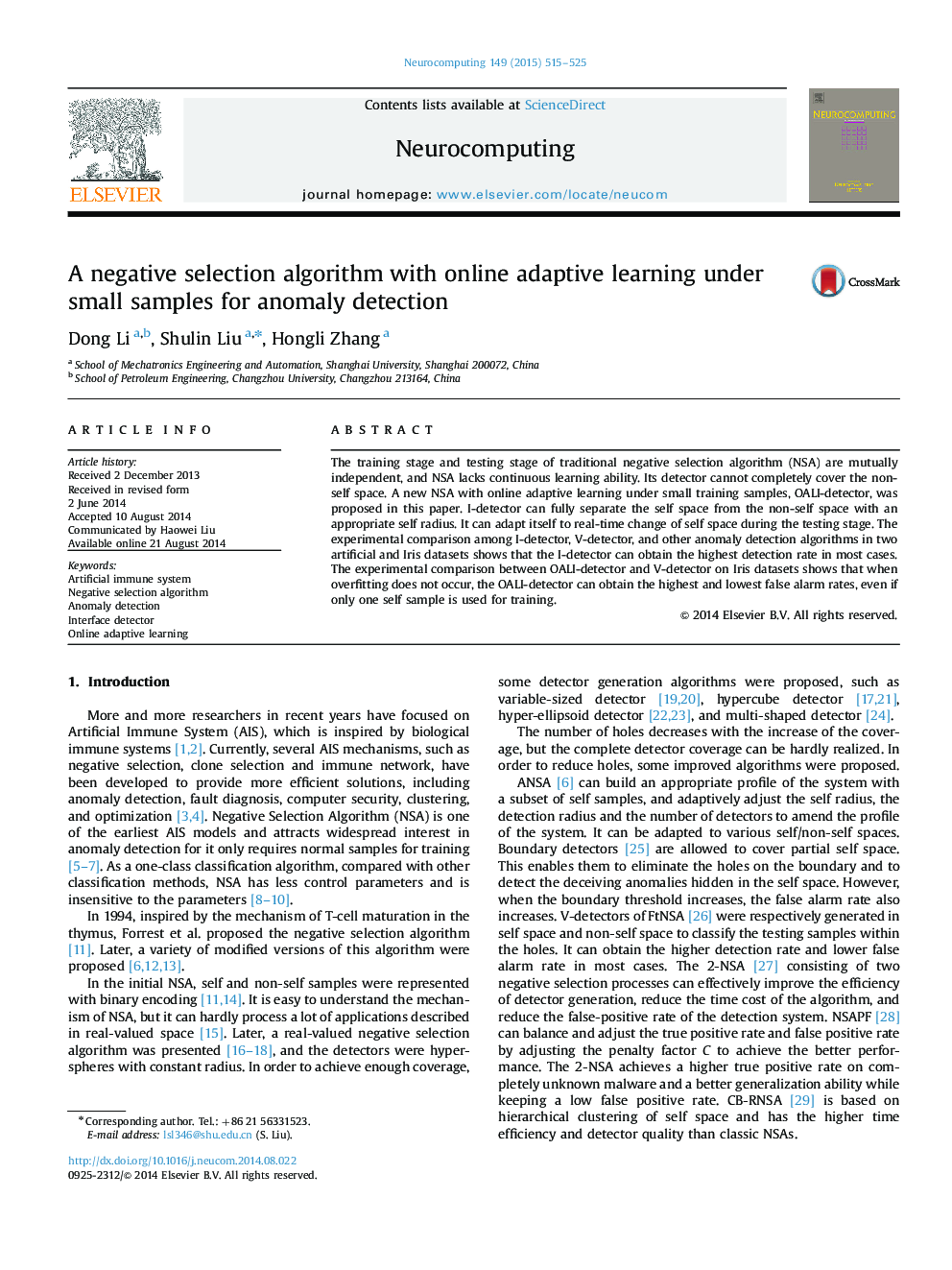| Article ID | Journal | Published Year | Pages | File Type |
|---|---|---|---|---|
| 409755 | Neurocomputing | 2015 | 11 Pages |
The training stage and testing stage of traditional negative selection algorithm (NSA) are mutually independent, and NSA lacks continuous learning ability. Its detector cannot completely cover the non-self space. A new NSA with online adaptive learning under small training samples, OALI-detector, was proposed in this paper. I-detector can fully separate the self space from the non-self space with an appropriate self radius. It can adapt itself to real-time change of self space during the testing stage. The experimental comparison among I-detector, V-detector, and other anomaly detection algorithms in two artificial and Iris datasets shows that the I-detector can obtain the highest detection rate in most cases. The experimental comparison between OALI-detector and V-detector on Iris datasets shows that when overfitting does not occur, the OALI-detector can obtain the highest and lowest false alarm rates, even if only one self sample is used for training.
